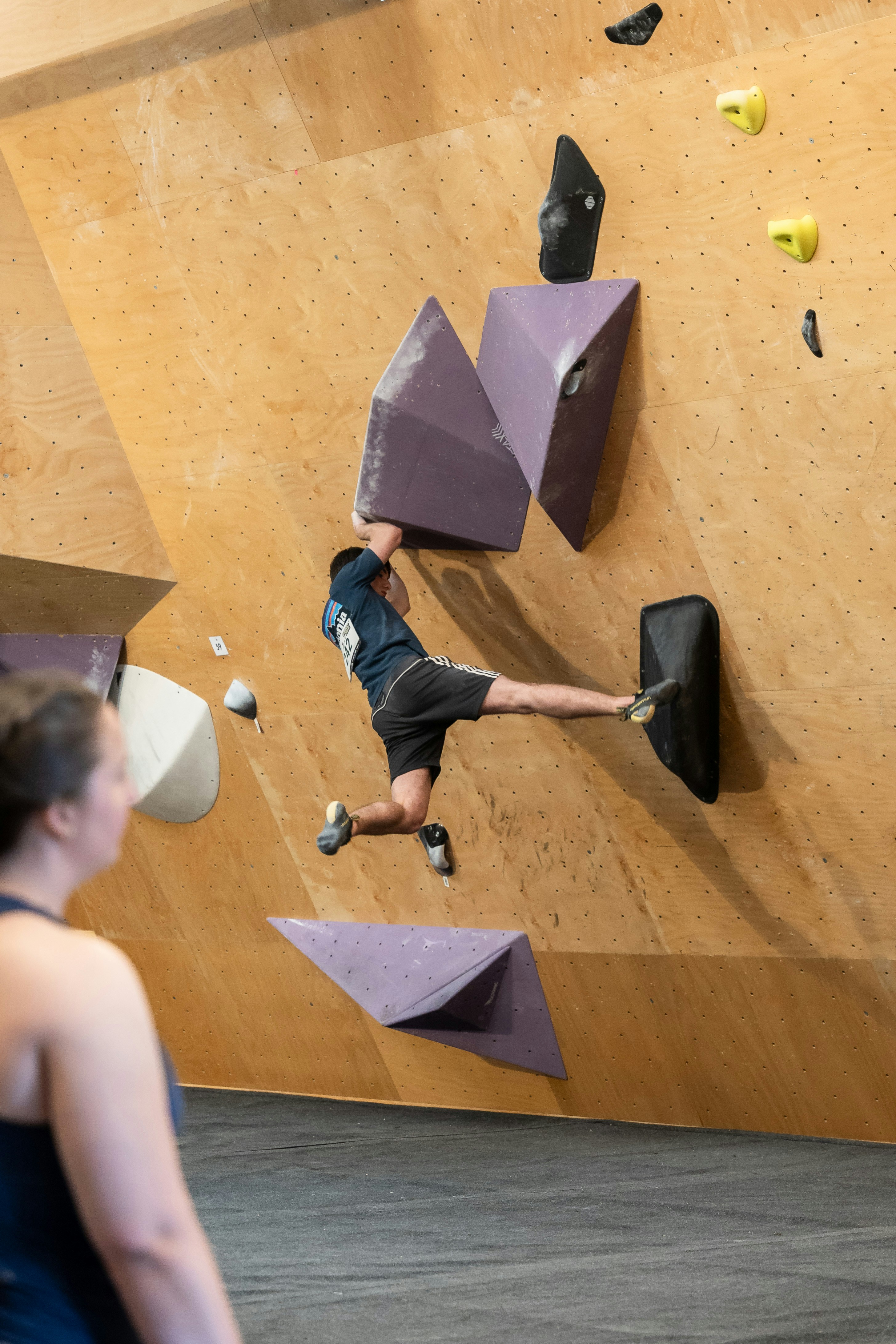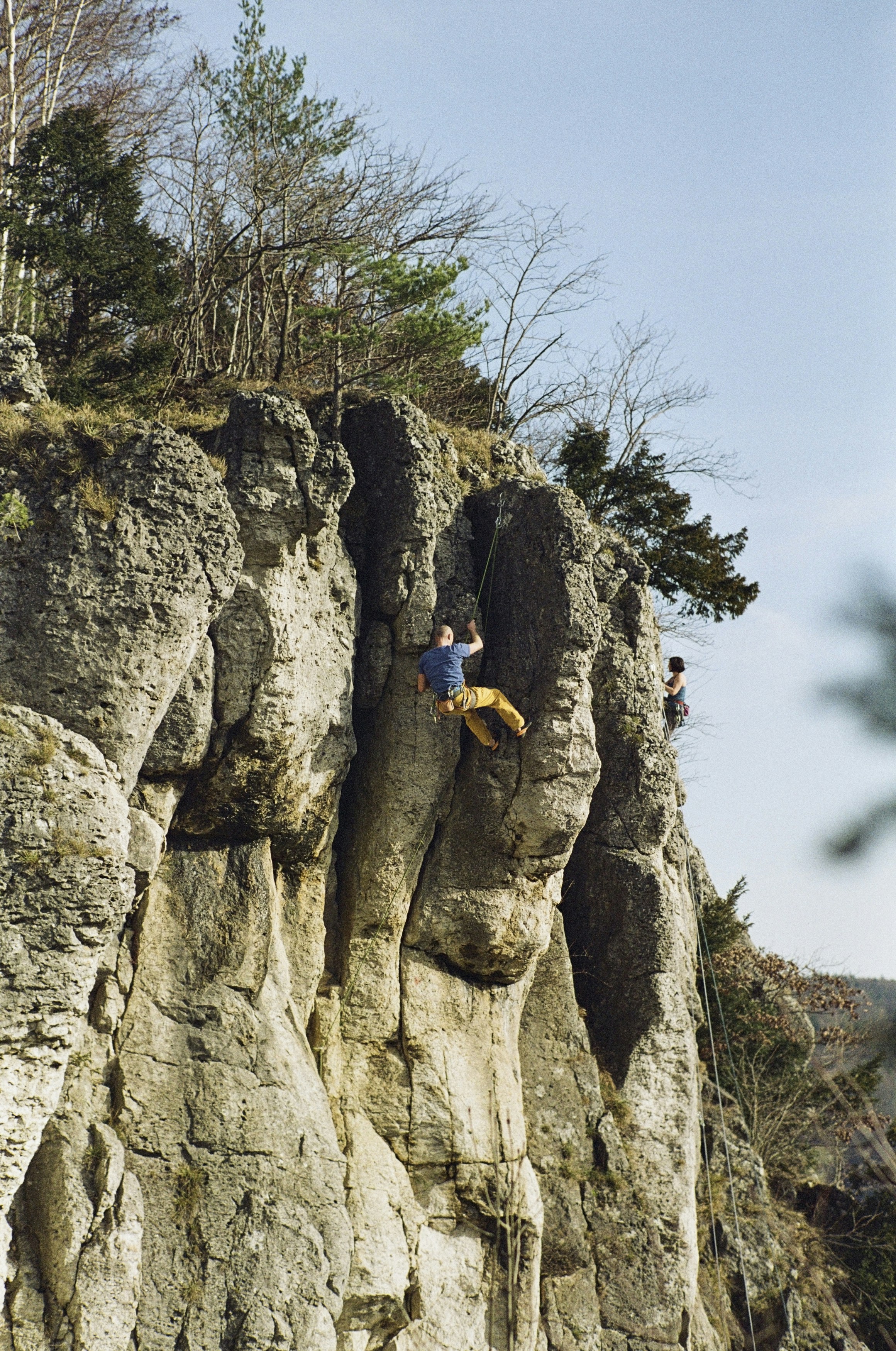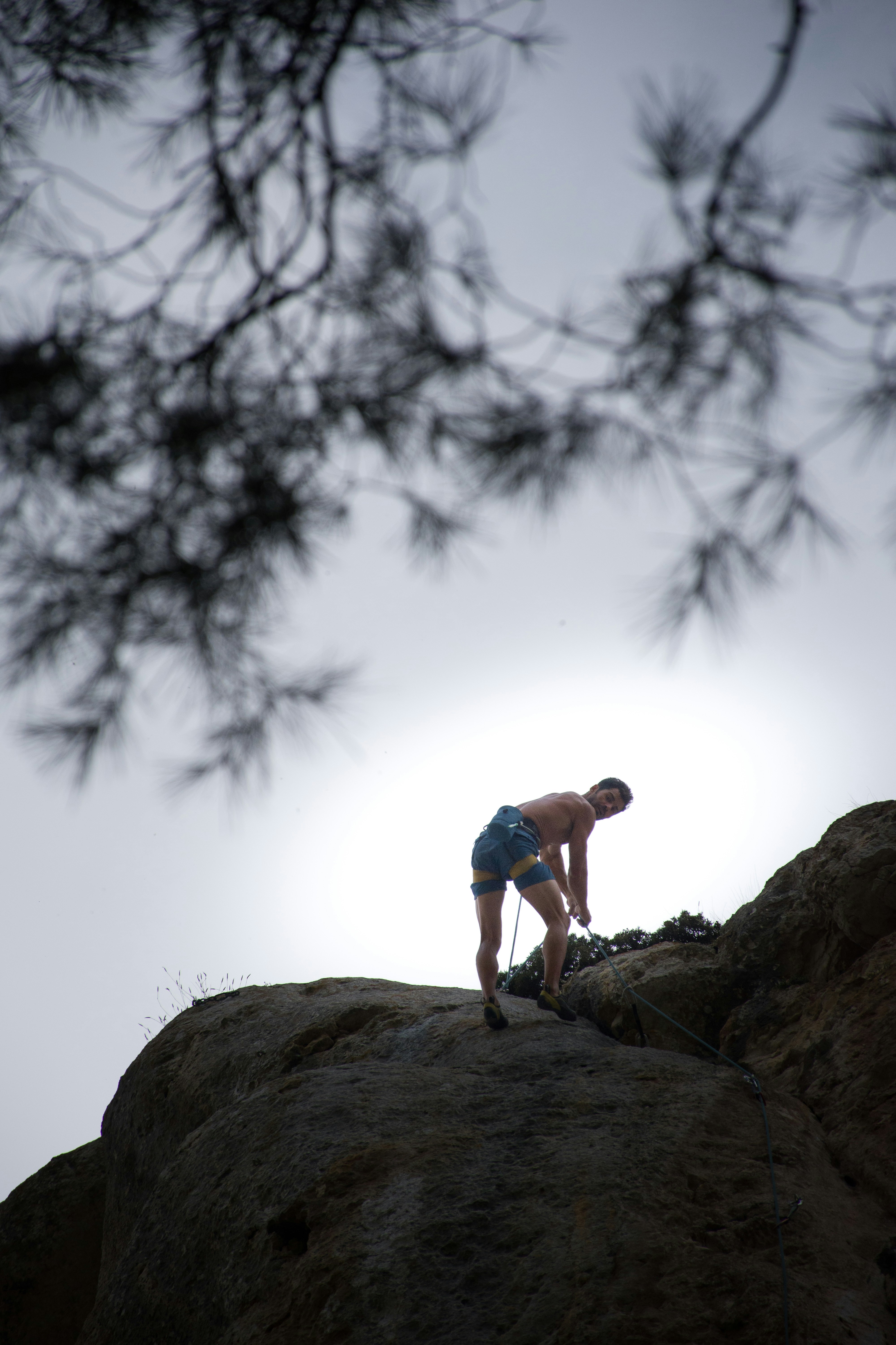The 2025 World Championships in Seoul are happening right now, and watching the world's best competitive climbers in action offers incredible insights into how the sport continues to evolve. As we're witnessing the speed finals tonight and preparing for the upcoming lead and boulder competitions, there's something fascinating about analyzing not just who wins, but how they win.
Competition climbing at this level isn't just about being stronger or training harder than everyone else. The athletes competing in Seoul represent the culmination of systematic technique development, and their movement patterns reveal trends that can inform training approaches for competitive climbers at every level. What we're seeing in these championships is the result of years of refined technique development, and there are lessons here for anyone serious about competition climbing.
The gap between recreational climbing and world championship level isn't just about raw ability - it's about the systematic approach these athletes take to movement efficiency, pressure management, and technical precision. When you watch someone like Janja Garnbret or Aleksandra Miroslaw compete, you're seeing the result of treating technique development like the competitive advantage it actually is.
Speed Climbing's Technical Revolution
Today's men's speed finals in Seoul highlighted just how technical speed climbing has become. What looks like pure athletic ability is actually incredibly refined technique that's been optimized down to millisecond-level precision. The athletes competing at this level have moved far beyond just being fast - they've developed technique systems that eliminate wasted motion entirely.
Speed climbing technique at the world championship level demonstrates several key principles that apply to all forms of competition climbing. First, every movement is purposeful and optimal. There's no approximation in foot placement, no inefficient hand positions, and no wasted energy in transitions. Each athlete has developed a movement sequence that's been refined through thousands of repetitions until it becomes automatic under pressure.
The psychological aspect of speed technique is equally impressive. These athletes have trained their technique to the point where they can execute perfect sequences while managing the intense pressure of head-to-head racing. This isn't just about muscle memory - it's about developing technique confidence that remains stable even when everything else is chaotic.
What's particularly interesting about speed climbing technique is how it demonstrates the importance of systematic movement development. The standardized speed route means that technique refinement happens in controlled conditions, allowing for incredibly precise optimization. This approach - perfecting technique in standardized conditions before applying it to varied challenges - is something that applies directly to boulder and lead training.
The speed athletes also demonstrate sophisticated understanding of movement efficiency under pressure. When races are decided by hundredths of seconds, every aspect of technique becomes crucial. This level of precision in technique development is something that competitive climbers in all disciplines can apply to their own training, even if they're not pursuing speed climbing specifically.
Pressure and Technique Execution
Watching world championship competitions reveals how dramatically pressure affects technique execution, and how the best athletes have developed systems for maintaining movement quality when stakes are highest. The isolation format used in these championships creates a unique pressure environment that tests not just physical technique, but the mental systems that support technique under stress.
Elite athletes like those competing in Seoul have developed technique confidence that remains stable under pressure. This isn't accidental - it's the result of systematic training that gradually increases pressure while maintaining technique quality. They've learned to trust their movement patterns even when their nervous system is activated by competition stress.
The preview and execution phases in boulder competitions reveal this particularly clearly. Athletes who maintain calm, systematic approaches to route reading tend to execute their planned sequences more accurately. Those who rush their preview or change their approach mid-climb often struggle with technique execution when it matters most.
Lead climbing adds another layer of pressure management, as athletes must maintain technique quality over sustained sequences while managing pump and fatigue. The best lead climbers demonstrate remarkable consistency in their movement patterns even as they approach their physical limits. This consistency comes from technique that's been developed to the point where it remains stable even under physiological stress.
What's particularly impressive about championship-level athletes is their ability to recover from technique mistakes without losing composure. When a movement doesn't go as planned, they can quickly assess, adapt, and continue climbing efficiently. This resilience in technique execution is something that requires specific training but is crucial for competitive success.
Movement Innovation and Adaptation
The World Championships serve as a laboratory for movement innovation, where route setters push the boundaries of what's possible and athletes respond with creative technical solutions. Seoul 2025 is continuing this tradition, with problems and routes that require athletes to demonstrate not just refined technique, but adaptability and movement creativity.
Modern competition route setting has evolved to test increasingly sophisticated movement patterns. The problems being set in Seoul require athletes to demonstrate mastery of dynamic coordination, complex body positioning, and movement sequences that integrate multiple technical skills simultaneously. This evolution in route setting drives corresponding evolution in training approaches and technique development.
Elite athletes demonstrate remarkable ability to adapt their technique to unexpected challenges. When a sequence doesn't match what they anticipated, they can modify their approach while maintaining movement efficiency. This adaptability comes from deep technical understanding rather than just physical ability - they understand the principles behind efficient movement well enough to apply them creatively to new situations.
The integration of volume and feature climbing in modern competitions has created new categories of movement skills that weren't as prominent in earlier eras of competitive climbing. Athletes competing in Seoul demonstrate sophisticated understanding of three-dimensional body positioning and movement that goes well beyond traditional hold-to-hold climbing.
What's particularly interesting is how technique innovations at the world championship level eventually filter down to affect training approaches and movement development at all levels of competitive climbing. The techniques being demonstrated in Seoul today will influence how competitive climbers train and develop movement skills for years to come.
Training Insights from Elite Performance
Analyzing elite performance at the World Championships reveals training principles that apply to competitive climbers at all levels. The athletes competing in Seoul didn't develop their abilities through random training - they've followed systematic approaches to technique development that prioritize movement quality over raw intensity.
Championship-level athletes demonstrate the importance of style-specific technique development. Speed climbers have developed movement patterns optimized for explosive, precise sequences. Boulder specialists show mastery of dynamic movement, coordination, and power application. Lead climbers display sustained technique precision that remains consistent even under fatigue.
However, the most successful athletes at these championships also demonstrate remarkable versatility. Even specialists show competency across multiple movement styles, suggesting that comprehensive technique development provides advantages even for athletes who compete primarily in one discipline. This versatility comes from training approaches that emphasize movement principles rather than just specific techniques.
The level of movement precision demonstrated in Seoul represents thousands of hours of deliberate practice focused specifically on technique refinement. These athletes have spent years developing movement patterns to the point where they can execute them automatically under any conditions. This level of technique development requires training approaches that treat movement quality as seriously as physical conditioning.
Elite athletes also demonstrate sophisticated understanding of energy management and movement efficiency. They've developed the ability to vary their effort output based on what each situation requires, using just enough energy to succeed without wasting resources they might need later. This efficiency comes from technique training that emphasizes optimal movement patterns rather than maximum effort approaches.
The Evolution of Competition Climbing Standards
The 2025 World Championships represent another step in the ongoing evolution of competition climbing standards. The level of technique demonstrated in Seoul is noticeably more refined than what we saw even a few years ago, reflecting the sport's continued development and the increasingly sophisticated training approaches being used by elite athletes.
Route setting continues to evolve in response to rising athlete capabilities, creating new challenges that test technique in increasingly sophisticated ways. The problems and routes in Seoul require not just individual technique mastery, but the ability to chain together complex movement sequences that test multiple technical skills simultaneously.
The depth of competition at the world championship level has also increased significantly. The margins between top performers continue to shrink, making technique refinement increasingly crucial for competitive success. Athletes can no longer rely primarily on physical advantages - success requires systematic approach to movement development and technique optimization.
This evolution in standards has implications for competitive climbers at all levels. The systematic approaches to technique development used by elite athletes can be adapted and applied by anyone serious about competitive climbing. The principles demonstrated in Seoul - movement precision, efficiency, adaptability, and pressure management - are relevant regardless of competition level.
The integration of different climbing disciplines in modern competitions has also influenced technique development approaches. Athletes who understand movement principles deeply enough to apply them across different styles of climbing have advantages over those who specialize too narrowly. This suggests training approaches that emphasize comprehensive technique development rather than style-specific training.
Mental Game and Technique Integration
Championship competition reveals the crucial relationship between mental state and technique execution. The athletes performing best in Seoul demonstrate not just physical technique mastery, but sophisticated mental systems that support optimal movement under pressure. This integration of mental and physical technique is often what separates good competitors from great ones.
Confidence in technique becomes particularly crucial at the world championship level, where margins are tiny and pressure is enormous. Athletes who trust their movement patterns can maintain technique quality even when their nervous system is activated by competition stress. Those who doubt their technique often abandon efficient movement patterns in favor of strength-based approaches that feel more secure but are actually less effective.
Focus management is another crucial aspect of technique execution at this level. Championship competitions are full of distractions - crowds, time pressure, the stakes involved, and the knowledge that mistakes are costly. Athletes who maintain focus on movement execution rather than getting caught up in external factors tend to climb closer to their potential.
The ability to stay present and execute technique in the moment, rather than getting ahead of themselves or dwelling on mistakes, is something that elite athletes have developed through specific training. They've learned to treat each movement as an individual opportunity for optimal execution, rather than getting overwhelmed by the complexity of entire problems or routes.
Recovery from technique mistakes is also more sophisticated at the elite level. When something doesn't go according to plan, the best athletes can quickly reassess, adjust their approach, and continue climbing efficiently. This resilience comes from deep technical understanding combined with mental training that prepares them for unexpected challenges.
Style-Specific Technique Lessons
Each discipline represented in the World Championships offers unique insights into technique development that can inform training approaches for competitive climbers specializing in different styles. The speed, boulder, and lead competitions in Seoul each demonstrate different aspects of movement mastery.
Speed climbing showcases the importance of movement automation and precision under pressure. The athletes competing in speed have developed technique to the point where it operates independently of conscious control, allowing them to focus on tactical elements like timing and race management. This level of movement automation is achievable in other disciplines through sufficient deliberate practice.
Bouldering competitions reveal the importance of dynamic movement control and coordination. Elite boulderers demonstrate sophisticated ability to generate, control, and apply power in precise ways while maintaining body positioning and balance. Their technique shows how dynamic movement can be systematic rather than chaotic when developed properly.
Lead climbing at the championship level demonstrates sustained technique precision and energy management. Elite lead climbers show remarkable consistency in movement quality even as they approach their physical limits. Their technique reveals how efficiency and precision compound over longer sequences to create significant advantages.
The athletes who perform well across multiple disciplines demonstrate movement principles that transcend specific techniques. They understand body positioning, energy management, and movement efficiency at a fundamental level that allows them to adapt their skills to different challenges effectively.
Practical Applications for Competitive Climbers
The technique insights from Seoul 2025 translate into practical training applications for competitive climbers at every level. The movement patterns and training approaches demonstrated by elite athletes can be adapted to inform technique development regardless of current ability level.
Systematic technique development should be a priority for anyone serious about competitive climbing. This means treating movement skills like any other trainable attribute - breaking them down into components, practicing those components deliberately, and progressively integrating them into more complex patterns. The athletes in Seoul didn't develop their abilities accidentally.
Movement quality should take priority over problem completion in technique-focused training sessions. Elite athletes spend significant training time on problems and routes that are well within their physical capabilities, focusing intensely on movement precision and efficiency. This approach allows for technique refinement without the distraction of being at physical limits.
Pressure training should be integrated into technique development from early stages rather than treated as a separate activity. The ability to maintain technique quality under pressure, demonstrated so effectively in Seoul, comes from gradually increasing pressure while maintaining movement standards during training.
Style diversity in training becomes crucial for developing the movement adaptability demonstrated by elite athletes. Even if you specialize in one discipline, exposure to different movement challenges helps develop the underlying movement understanding that supports adaptability and continued improvement.
Video analysis and feedback systems should be integrated into serious technique development programs. The level of movement precision demonstrated in Seoul comes from athletes who have systematically analyzed and refined their technique over years of focused development.
The Technique Development Path Forward
What we're witnessing in Seoul represents the current state of competitive climbing technique, but it also points toward future developments in how movement skills are developed and refined. The systematic approaches used by elite athletes provide a roadmap for technique development that can be adapted by competitive climbers at any level.
The evolution of training approaches continues to emphasize movement quality over raw intensity. Athletes who understand this principle and apply it systematically in their training will have advantages over those who focus primarily on strength and fitness without corresponding attention to technique development.
Technology integration in technique analysis and development will likely continue to expand, providing new tools for understanding and improving movement patterns. However, the fundamental principles demonstrated in Seoul - precision, efficiency, adaptability, and systematic development - will remain relevant regardless of technological advances.
The increasing depth of competition at all levels means that technique development becomes more crucial for competitive success. Athletes can no longer rely on physical advantages alone - systematic approach to movement development is becoming necessary for competitive success at every level.
The World Championships in Seoul showcase what's possible when technique development is treated as seriously as physical conditioning. The athletes competing represent the culmination of systematic movement training, and their performance demonstrates that technique truly is the multiplier that makes strength and fitness effective.
Whether you're just beginning your competitive journey or you're working to break through performance plateaus, the lessons from Seoul are clear: systematic technique development, treated with the same seriousness as strength and fitness training, provides the foundation for competitive success. The athletes competing in these championships didn't get there by accident - they followed systematic approaches to movement development that can be adapted and applied by anyone serious about competitive climbing.
The techniques being demonstrated in Seoul today will influence how competitive climbers train and develop movement skills for years to come. By understanding and applying these insights systematically, competitive climbers can accelerate their technique development and move closer to their performance potential.


